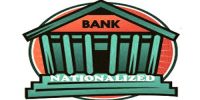Credit control is the method or technique; by which central bank can keep then the availability of credit or money supply at the desired level, and can control the credit creation power of the banking system.
The Quantitative or General Credit controls: The quantitative controls are designed to control and adjust the total quantity or the size of a volume of deposits created and cost of bank credit in general without regard to the particular field of an enterprise or economic activity in which the credit is used.
Methods of quantitative or general credit controls: The general methods of quantitative or general credit controls are –
They are given below –
(1) Bank Rate Policy: The bank rate or rediscount rate is the rate at which the central bank rediscounts papers presented by commercial banks or makes advances to them directly against approved securities. Bank rate policy seeks to affect both the cost and availability of credit.
Assumptions of bank rate policy: The bank rate policy is based on the following assumptions –
- The lending rates of the commercial banks are related to the discount rate of the central bank.
- Commercial banks are not prejudiced against rediscounting at the central bank.
- They keep only minimum cash reserve just sufficient for an ordinary occasion and for their additional requirements, they have to approach the central bank.
- They possess eligible securities in sufficient quantities.
- Borrowing and investment of businessmen are dependent on the lending rates of commercial banks, so that arise, in interest rates will restrict borrowing and investment, while a fall in the lending rate will stimulate borrowing arid investment.
- The economic structure should be sufficiently elastic so that a variation in the credit conditions is quickly followed by changes in prices, wages, and the incomes and production.
(2) Open Market Operations: Open Market Operations consist of deliberate and direct sales and purchase of short, medium or long-term fixed interest government securities by the central bank, on its own initiatives, for the purpose of implementing monetary policy.
Mechanism of Open Market Operation: Mechanism of open market operation are given below –
- Inflationary situation: In these periods of an inflationary situation, the central bank sells the first class bills. Buyers of these bills – whether they are commercial banks themselves or others surplus.
- In the time of depression: In the time of depression, the central bank buys bills in the open market for which it will pay cash to the commercial banks.
(3) Cash Reserve Ratio Requirement: Commercial banks credit on the basis of their total reserves.T he commercial banks are required, either by custom, to keep a certain amount of cash reserve at the central bank.
Minimum cash reserve requirements were fixed for three reasons:
- To ensure the liquidity and solvency of individual commercial banks and of the banking system as a whole.
- To provide the central bank with a supply of deposits for local operations and
- To influence and ultimate.















